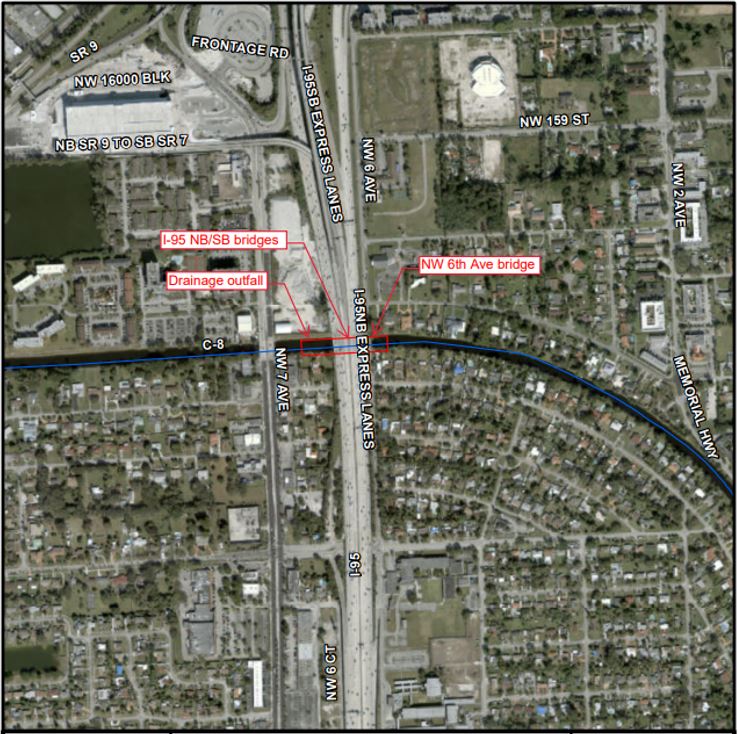USACE announces public comment on proposed Improvements to the Golden Glades Interchange pursuant to Section 408
The U.S. Army Corps of Engineers (USACE) Jacksonville District announces a 15-day public comment period for the Draft Environmental Assessment (EA) and Proposed Finding of No Significant Impact (FONSI) for proposed improvements to the Golden Glades Interchange bridges and other infrastructure on the Biscayne (C-8) Canal in Miami-Dade County, Florida. The USACE, in response to a request from the South Florida Water Management District (SFWMD) on behalf of the Florida Department of Transportation (FDOT), is evaluating a modification to the Central and Southern Florida (C&SF) Federal Civil Works project pursuant to 33 U.S.C. 408 to make improvements to the Golden Glades Interchange.
Comments are due Wednesday, May 18, 2023.
The Golden Glades Interchange is the confluence point for three expressways (I-95, Florida's Turnpike, and SR 826) and two principal arterials (SR 7/US 441 and SR 9) that serve local and regional traffic between three counties: Miami-Dade, Broward, and Palm Beach. It includes several main bridges and ramp bridges which cross over the C-8 Canal. As examined in the Golden Glades Interchange Project Development and Environment (PD&E) Study from SR 93/I-75 to the Golden Glades Interchange (FDOT, 2016), the FDOT proposes to make improvements to the Golden Glades Interchange bridges and other infrastructure on the C-8 Canal. These improvements include replacement of three existing bridges (I-95 Northbound, NW 6th Avenue Bridge, and I-95 Southbound) and drainage outfalls, as well as installation of a new Intelligent Transportation Systems (ITS) subaqueous fiber optic conduit crossing and a new triple-barrel drainage outfall within the existing project footprint. The Proposed Action would include dredging and filling in 0.54 acres of the C-8 Canal categorized as Other Surface Waters (OSWs) for construction of riprap and new outfalls associated with bridge replacement activities. The project proposes approximately 3,000 cubic yards of dredging and placement of 1,500 cubic yards of fill into the C-8 Canal. Riprap armoring is also proposed to be installed to protect the canal side slopes. These improvements will enhance connectivity between the major highways, enhance safety and mobility within the interchange, improve multimodal use for transit and freight, and enhance emergency access and response time.
The EA and Proposed FONSI are available for review below:
Draft environmental assessment and proposed finding of no significant impact, FDOT Golden Glades Interchange bridge and infrastructure improvements on C-8 Canal, Section 408 request, Miami-Dade County, Florida
APPENDIX A: PERTINENT CORRESPONDENCE
APPENDIX B: THREATENED AND ENDANGERED SPECIES
Please submit comments on the Draft Environmental Assessment (EA) and Proposed FONSI via email to Dr. Jessica Dell at Jessica.A.Dell@usace.army.mil (recommended subject: “Section 408 Golden Glades Interchange EA Comments”) by Wednesday, May 18, 2023.